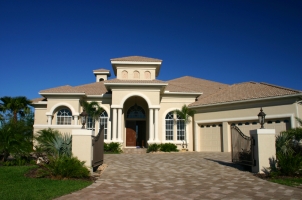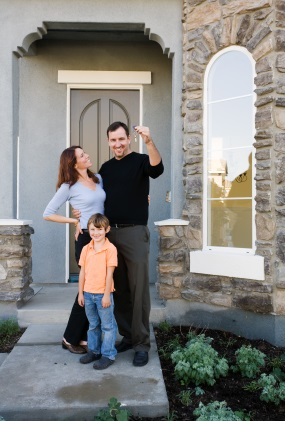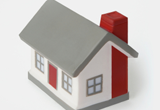
Sales of New Residential Homes Reaches Two-Year Peak in November
By Stevie Duffin Updated on 12/28/2012By Daniel Duffield
In November, sales of new single-family homes reached a two-year peak, hitting the highest level since April 2010 at an adjusted annual rate of 377,000.
These new home sales averaged 4.4% above the corrected October rate of 361,000, according to a statement issued on Thursday from the U.S. Census Bureau and the Department of Housing and Urban Development (HUD).
Statistics indicated that new home sales rose 15.7% since November 2011 in which the rate was 327,000, demonstrating some progress in the recovery of the housing market.
In terms of pricing, the median price of these new homes being sold was $246,200, in comparison with $237,000 during the month of October. The mean sales price averaged $299,700.
At the close of November, the number of new homes available for sale hit 149,000, demonstrating a 4.7-month inventory of homes at the sales pace for November.
According to experts from Econoday Economic Report, the market for new homes is a good sign for the economic outlook, considering future insufficiency in terms of new construction.
The analysts additionally stated that economic issues are currently being overshadowed by the expected onset of the fiscal cliff and the potential consequences of higher taxes on consumer home purchase.
While home sales rose to new heights, consumer confidence plummeted for the second straight month due to the sluggish recovery of historically low mortgage rates coupled with the high demand in the housing market.
Economist Gregory Bird of Moody’s Analytics disagrees, saying that those who can afford homes and acquire mortgages will not be affected by the concerns of the fiscal cliff.
In December, the Consumer Confidence Index dropped from 71.5 in November to 65.1, while the Expectations Index plummeted from 80.9 in November to 66.5.
Director of economic indicators at the Conference Board Lynn Franco explains this trend as the result of the high degree of uncertainty which has been a result of the ongoing fiscal cliff talks, which have consequently led to a sharp drop in consumer expectations within December.
Consumer optimism in the short term also dropped in December.
In terms of consumer expectations, those anticipating better business conditions within the next six months declined from 21.3% to 17.6%, while those anticipating worse business conditions rose from 15.8% to 21.5%.
According to Lynn Franco, “A similar decline in expectations was experienced in August of 2011 during the debt ceiling discussions. While consumers are quite negative about the short-term outlook, they are more upbeat than last month about current business and labor market conditions."

Didn't find the answer you wanted? Ask one of your own.
-
 What You Need To Know About Escrow
View More
What You Need To Know About Escrow
View More
-
 President Obama Initiates Lower FHA Mortgage Insurance Premiums
View More
President Obama Initiates Lower FHA Mortgage Insurance Premiums
View More
-
 What is Quantitative Easing?
View More
What is Quantitative Easing?
View More
-
 The 5 New Mortgage and Housing Trends for Summer 2013
View More
The 5 New Mortgage and Housing Trends for Summer 2013
View More
-
 Fannie Mae profitability skyrockets
View More
Fannie Mae profitability skyrockets
View More
-
 Foreclosure protections for more soldiers after lawmakers draft bill
View More
Foreclosure protections for more soldiers after lawmakers draft bill
View More
-
 FHFA: HARP success follows low mortgage rates, February refinance volume strong
View More
FHFA: HARP success follows low mortgage rates, February refinance volume strong
View More
-
 Use of Mortgage Interest Deduction Depends on Where You Live
View More
Use of Mortgage Interest Deduction Depends on Where You Live
View More
-
 HUD will sell 40,000 distressed loans in 2013
View More
HUD will sell 40,000 distressed loans in 2013
View More
-
 Mortgage Principal Reduction Could Save Taxpayers $2.8 Billion
View More
Mortgage Principal Reduction Could Save Taxpayers $2.8 Billion
View More
-
 Mortgage Applications Regain Traction after Sluggishness, Rates Continue to Fall
View More
Mortgage Applications Regain Traction after Sluggishness, Rates Continue to Fall
View More
-
 HARP 3.0 Discussions Reveal Little Hope for HARP Update
View More
HARP 3.0 Discussions Reveal Little Hope for HARP Update
View More
-
 Home Prices Rise in February According to LPS Data
View More
Home Prices Rise in February According to LPS Data
View More
-
 Balancing Act: House Committee Hears Opposing Viewpoints Over Mortgage Interest Rate Deduction
View More
Balancing Act: House Committee Hears Opposing Viewpoints Over Mortgage Interest Rate Deduction
View More
-
 Near Record Low Mortgage Rates Buoy Housing Recovery
View More
Near Record Low Mortgage Rates Buoy Housing Recovery
View More
Related Articles
Ask our community a question.
Searching Today's Rates...

Featured Lenders
Lisa Stepp
RBS Citizens
Clifton Park, NY
Cameron Burke
Vision One Mortgage
Huntington Beach, CA
Kat Whitman
Whitman Met, Inc.
Sacramento, CA

